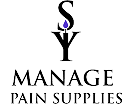Cosmetics
New research identifies safer, greener options
A complete research, “Past Sulfate-Free Private Cleaning Expertise,” revealed this week within the scientific journal Cosmetics, make clear developments in sulfate-free cleaning merchandise.
Authored by Evelyn Su of Sino Lion USA and Stephen Herman of the College of Cincinnati, the analysis, which obtained no exterior funding, delved into the restrictions of conventional sulfate-based surfactants and the promise of amino acid-based options.
The rising demand for sulfate-free merchandise
The research is grounded within the quickly rising shopper demand for sulfate-free formulations, aligning with broader sustainability and security traits. The authors emphasised that “the target of sulfate-free private cleaning know-how shouldn’t be aimed solely on the absence of ‘sulfate’ wording within the listing of elements, however on the true advantages each in private use and in environmental results.”
These advantages embody mildness, biodegradability, low carbon and water footprints, and renewability.
In line with the research, sulfates like sodium lauryl sulfate (SLS) and sodium laureth sulfate (SLES) have been mainstays in private care formulations as a consequence of their cost-effectiveness and efficiency in foam manufacturing. Nonetheless, these surfactants carry important drawbacks.
The researchers defined that “sulfates can excessively strip oil from the pores and skin, scalp, and hair, breaking barrier integrity and growing trans-epidermal water loss.” Moreover, the manufacturing of SLES usually leads to contamination with 1,4-dioxane, a carcinogenic byproduct.
Benefits of amino acid-based surfactants
The research positioned amino acid-based surfactants, notably glutamates and alaninates, as the following technology of secure and sustainable cleaning elements. “Of the potential amino acid-based surfactants, glutamates for pores and skin cleaning and alaninates for hair cleaning are the most effective options each for efficiency and industrial viability,” the authors famous.
These surfactants provide intrinsic security, are biodegradable, and align with growing shopper scrutiny of ingredient sourcing.
Moreover, the researchers outlined technical developments in addressing formulation challenges with glutamates, similar to attaining the specified viscosity with out sacrificing efficiency.
“The glutamates’ problem in thickening is because of their massive, multicharged head group,” the authors wrote. Additional, they famous that “patented applied sciences now allow mixing glutamate surfactants with amphoterics to beat this problem, making certain constant viscosity throughout formulations.”
Security and mildness: Key promoting factors
The research emphasised the mildness and security of glutamate and alaninate surfactants in comparison with conventional sulfates. Utilizing MTT50 and pink blood cell assessments, the researchers demonstrated that sodium cocoyl glutamate and alaninate outperform sulfates like SLES in security and irritation potential.
“Sodium cocoyl glutamate has the best MTT50 worth among the many surfactants examined, indicating superior mildness,” researchers reported, including that “in distinction, SLES demonstrated the bottom security metrics.”
Moreover, glutamates contribute to decreasing irritation and residue left by different surfactants. The research revealed that “the addition of two.5% sodium cocoyl glutamate to a standard SLES-based formulation resulted in a 55% lower in SLES adsorption on the pores and skin, enhancing mildness and pores and skin really feel.”
Environmental and market implications
Researchers additionally highlighted the environmental advantages of transitioning to amino acid-based surfactants. These surfactants, derived from renewable sources, provide decrease water and carbon footprints in comparison with their sulfate-based counterparts.
The research additional underscored broader market implications: “Sulfate-free merchandise have demonstrated an annual progress charge of roughly 18% since 2010, pushed by shopper demand for safer, sustainable, and ‘free-from’ formulations.”
The research offers a strong basis for beauty and private care producers to reimagine their formulations. By integrating amino acid-based surfactants similar to glutamates and alaninates, firms can ship on shopper calls for for security, sustainability, and efficiency.
Because the authors concluded, “The search for higher cleaning merchandise thus guarantees a greener Earth for future generations.”
Journal: Cosmetics, 2025, 12, 14. Doi: 10.3390/cosmetics12010014, “Past Sulfate-Free Private Cleaning Expertise.” Authors: Su, E.; Herman, S.

